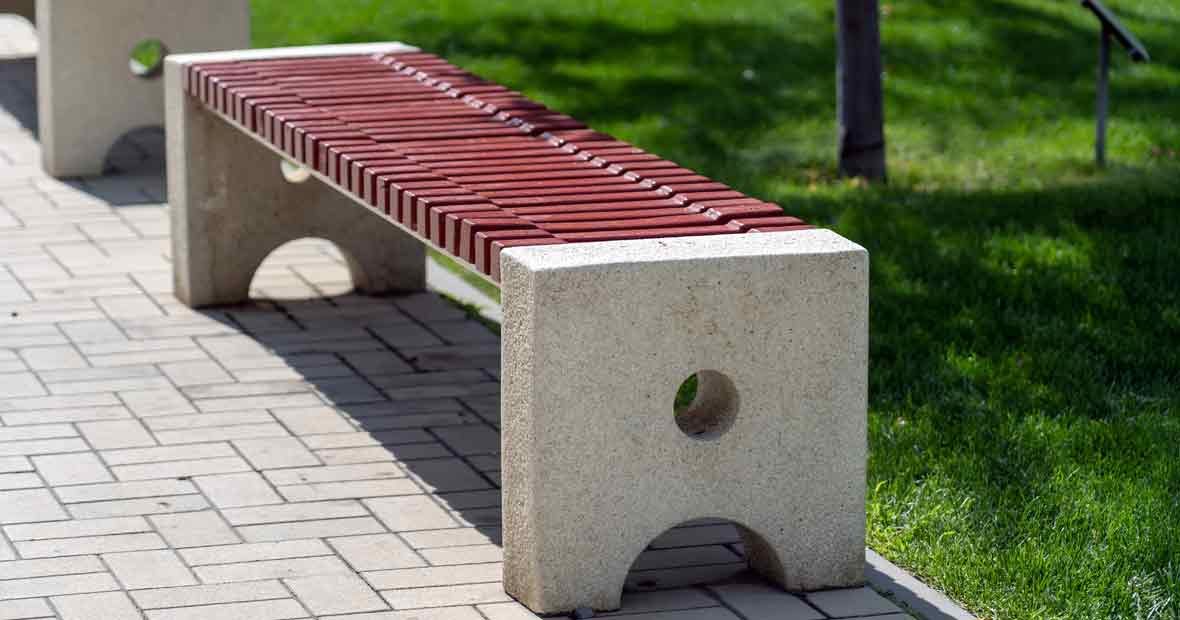
Public seating serves as a ubiquitous element in urban life, offering respite to weary pedestrians and enhancing the aesthetic appeal of cityscapes. Yet, the design of these seemingly simple structures goes beyond mere visual appeal. Comfort and functionality hold paramount importance in the design process of public seats, setting the tone for their acceptance or rejection within the urban fabric. The symbiotic relationship between comfort and functionality often dictates the success of these structures, influencing seating choices and contributing to their longevity. Through an intricate understanding of user needs, smart material selection, and a keen eye for aesthetics, designers strive to create public seating that enriches the urban experience.
Exploring the Intersection of Comfort and Functionality in Public Seating
Urban life presents a myriad of opportunities for social interaction and engagement. One vital aspect that plays a critical role in shaping these experiences is public seating. This essential facet of urban design encompasses the principles of ergonomic design to enhance user comfort, along with the incorporation of functionality.
Influence of Comfort on Public Seating Choices
Ergonomic principles lay the foundation for public seating design, ensuring a comfortable experience for users. The impact of public seating on health and wellbeing cannot be overstated, with the choice of materials playing a crucial role in enhancing comfort levels. Indeed, public seating can significantly influence accessibility for individuals with mobility challenges, underscoring the necessity for thoughtful design.
Role of Functionality in Public Seating Design
Equally pivotal is the role of functionality in public seating. The latest trends in public seating design have seen a shift towards creating furniture pieces that not only serve their primary purpose but also contribute to the overall aesthetics of public spaces. Embracing technology within seating design can heighten functionality, providing users with a more convenient and engaging experience.
Harmonizing Comfort and Functionality
Creating a balance between comfort and functionality in public seating presents its unique challenges. However, successful case studies highlight that this balance is achievable. Environmental considerations, too, factor into the design process, with sustainability taking precedence in the creation of public seats.
Ultimately, the design of public seating can significantly influence social interactions, contribute to the overall aesthetics of public spaces, and enhance user experiences. Through thoughtful design that harmonizes comfort and functionality, public seating can contribute positively to urban life. are more than mere places to rest; they are central to our shared experiences and interactions in public spaces.
Impact of Innovative Seat Design on Urban Life
Unfolding the vast realm of urban life, the innovation in public seat design emerges as a significant contributor towards shaping cityscapes and enhancing the comfort of city dwellers. The influence of innovative seats extends beyond aesthetics, encapsulating elements of convenience, accessibility, and fostering a comprehensive urban living experience. Innovative seat design is not just an art, but a science, with its roots plunged deep into technology, ergonomics, and sustainability.
Delving into the various methods employed in the innovation of urban seat design, a wide range of factors are considered. Going beyond traditional materials and forms, designers are increasingly incorporating high-tech materials and smart technologies into their creations. These advancements are not only enhancing the visual appeal but also promoting energy efficiency and durability in urban seats, thereby contributing towards a sustainable urban environment.
Looking into the influence of innovative seats on urban landscapes, it is evident that they play a pivotal role in defining the visual identity of public spaces. From parks to bus stops, the design of seats can significantly impact the perception and usage of these spaces. A well-designed and strategically placed seat can transform a mundane street into an inviting and vibrant social hub.
The benefits of innovative seat designs extend beyond aesthetics to influence the health and well-being of city residents. Ergonomics plays a crucial role in seat design, ensuring comfort and minimizing the risk of posture-related health issues. Moreover, the inclusion of accessible features in seat designs can significantly improve the urban living experience for the elderly and those with reduced mobility.
Despite the numerous benefits, the implementation of innovative seat designs in urban spaces is not without its challenges. These include balancing aesthetics with functionality, ensuring durability against weather conditions and vandalism, and meeting diverse user needs. Yet, there are numerous successful case studies that showcase the positive impact of innovative seat design on urban life, proving that these challenges can indeed be overcome.
Considering future trends in urban seat design, it is clear that innovation will continue to evolve, driven by advancements in technology, changing user needs, and a growing emphasis on sustainability. As a result, innovative seat design will undoubtedly continue to play a crucial role in shaping urban life, influencing not only the physical landscape but also the socio-economic dynamics and cultural behaviors of city dwellers.
Key Considerations in Designing Functional Public Seats
Public seating design involves striking a balance between comfort, functionality, and aesthetics while considering the diverse needs of the users. It is a complex process that requires a deep understanding of human behavior, urban dynamics, and the impact of design on the exterior environment.
Understanding User Needs in Public Seating
Ergonomics plays a pivotal role in the creation of public seats. A deep understanding of the physical and psychological comfort of users, including those with mobility issues, is paramount. Design principles should ensure accessibility for all, as public spaces are meant to be inclusive. A well-designed seat not only serves its primary function of providing rest but can also subtly guide behavior. For instance, the design can discourage certain uses, such as prolonged occupation by homeless people, without causing discomfort to other users.
Material Selection for Durable Public Seats
Durability and resistance of materials are significant factors in the design process. The choice of material can heavily depend on the local climate, which can affect the longevity and maintenance of public seats. For example, in coastal cities, materials should be resistant to corrosion from salt in the air. Furthermore, modern technology has introduced new possibilities, such as seats with USB charging ports, which require robust materials to protect the technology from weather elements.
Incorporating Aesthetics in Functional Design
The visual appeal of public seats contributes to the overall aesthetics of a city. While functionality is vital, the design should not compromise the city's image. Therefore, blending the seats with the urban landscape to create coherent public spaces is crucial. However, regulations and laws may impose restrictions on the design of public seats, requiring designers to be creative in their approach.
Comfort, location, and type of public seat (e.g., park bench vs. train station seat) are other factors that need consideration. Case studies show that cities with functional and attractive public seats foster a better sense of community and contribute to the well-being of their inhabitants. It is indeed a complex yet rewarding endeavor to design public seats that cater to the diverse needs of a city's inhabitants while enhancing the urban landscape.
